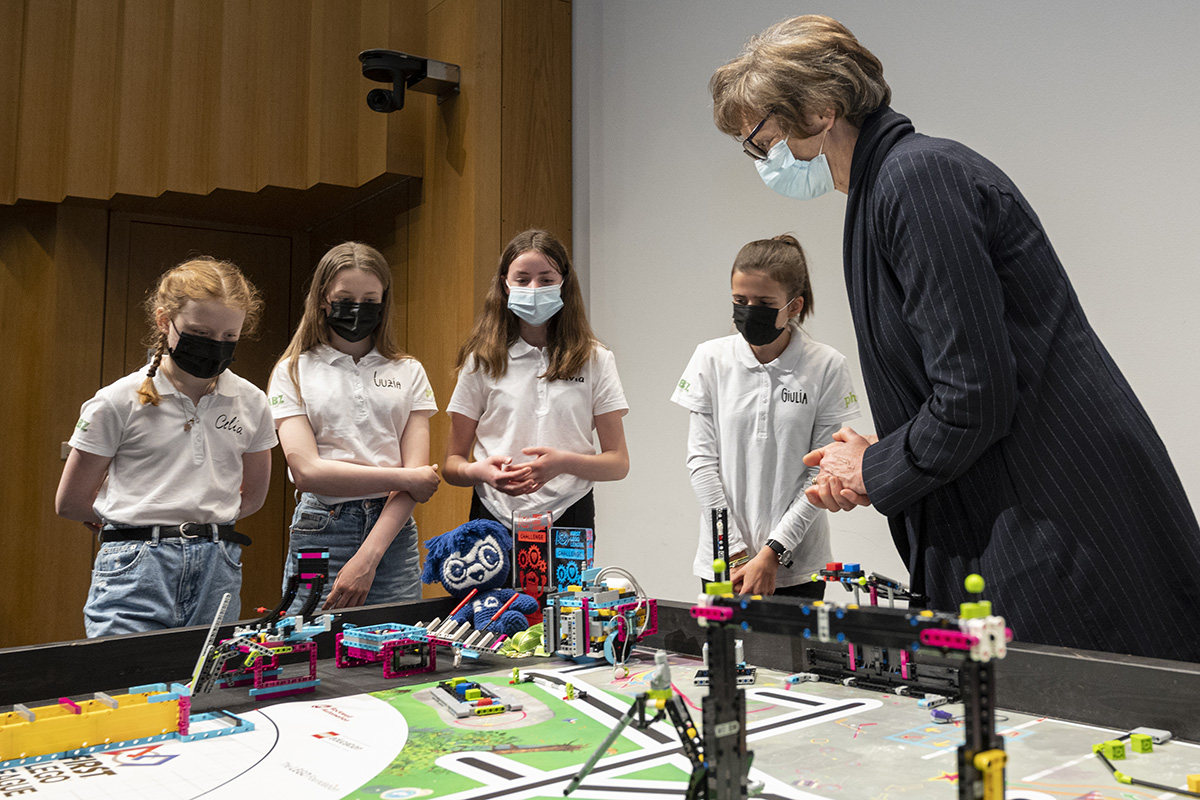Reaching critical mass of women at ETH

The outgoing Rector, Sarah Springman, reflects on where and how promoting women makes sense and what it means to be successful in this area.
This month marks the end of my time as Rector at ETH Zurich. Numerous people have asked me whether I’ve been successful in this role in promoting women. In fact, it’s been a key goal throughout the past 25 years. Let’s see…. as I focus on areas that I impacted on directly.
Women in science still have to put in an above-average effort to be seen at all: Donna Strickland had no Wikipedia entry before she won the Nobel Prize in Physics in 2018. Although I can’t award Nobel Prizes, ETH has increased the quota of women among our honorary doctors (to 41%) and honorary councillors (to 25%) over the last seven years putting outstanding women into the spotlight. Why? Because they deserve this recognition, and our students need role models, know that every door is open to them and that they can achieve anything.

Of course, new appointments and boosting female participation come under this section as well. I’m extremely thankful that ETH Zurich has Joël Mesot at its helm, a man who not only speaks about promoting women, but lives by it and puts it wholeheartedly into practice. He increased the number of women on the Executive Board and ensured that over 40% of new professorial appointments at ETH over the past two years were of highly talented women, which is quite remarkable for a technical university! Adding to that, about 90% of the retiring professors are male.
Reaching critical mass
But it takes more than just role models; we also need like-minded people. In the seven years I’ve been in office, the percentage of women students has risen from a total of 30.5 to 33.3%, which may not sound that much. So what does it really mean? Well, 5,870 women were studying at ETH in 2015, whereas today there are over 8,180, some 2,310 women more – every one of these 2,310 women makes a difference! Whether it’s 100 female students (as in 2015) or 200 (as for last autumn’s semester) who embark on a Bachelor’s degree in computer science, it matters. Because we’ll have reached critical mass at some point, where it’s considered “normal” for women to study computer science. And, incidentally, the proportion of women doesn’t have to be 50% for this to happen.
“I witnessed their enthusiasm and commitment – no one can tell me that girls are not interested in science and engineering!”Sarah Springman
As the Vice President of the external page kihz Foundation, it was extremely important to me that we should increase the offers of places for newly born and young children year by year, so that we could serve young mothers, while still being highly educational, efficient and economical. We also introduced guidance for young student parents on how we can help them be successful in balancing family obligations while navigating their studies. This is essential to enable us to reach critical mass and assist students with different family backgrounds to study.
Getting started early
Promoting education for girls and women, including future, sustainable careers in the STEM fields, is in the interest of society. It calls for social change at all levels and new ways of thinking. We have to influence teachers, parents and grandparents, too! Above all, the process needs to start as early as possible – before role stereotypes are entrenched in children. During my tenure, I’ve had the privilege of seeing many initiatives, some larger, some smaller, where girls and young women are very consciously and self-confidently achieving great things in STEM subjects.
We have not only supported Professor Juraj Hromkovic and the Training and Advisory Centre for Computer Science Education (ABZ) in organising the First European Girls' Olympiad in Computer Science 2021. In the last 15 years, the ABZ has reached more than 10,000 girls between the ages of 10 and 12, who learned programming in classroom sessions. An essential introduction across all educational backgrounds, and which eliminates some key gender hurdles. And last year, for example, I met the “i-Girls” who took part in the First Lego League robotics competition. I witnessed their enthusiasm and commitment – no one can tell me that girls are not interested in science and engineering! Most probably that has never been true, and we must say goodbye for once and for all to this assumption.
ETH is also keen to play a part in promoting women at an early stage. The newly founded ETH Youth Academy offers interested pupils a range of courses on mathematics and science topics that improve their concept understanding, and round out and enhance what they learn in school.
My conclusion
When it comes to promoting women, we need to get rid of stereotypes early on, we need more role models, and we need to reach critical mass. So how have we done? Well, we’ve been more successful in this area than I initially thought, but of course not as successful as I would have liked!
And now I’ll be watching the progress unfolding from afar, and I wish everyone – women, men and non-binary people – at ETH all the best!
Further information
Gender equality at ETHNewsletter subscription
Get the latest News regularlyMedia Relations
Dep. Bau, Umwelt und Geomatik
Stefano-Franscini-Platz 5
8093
Zürich
Switzerland
